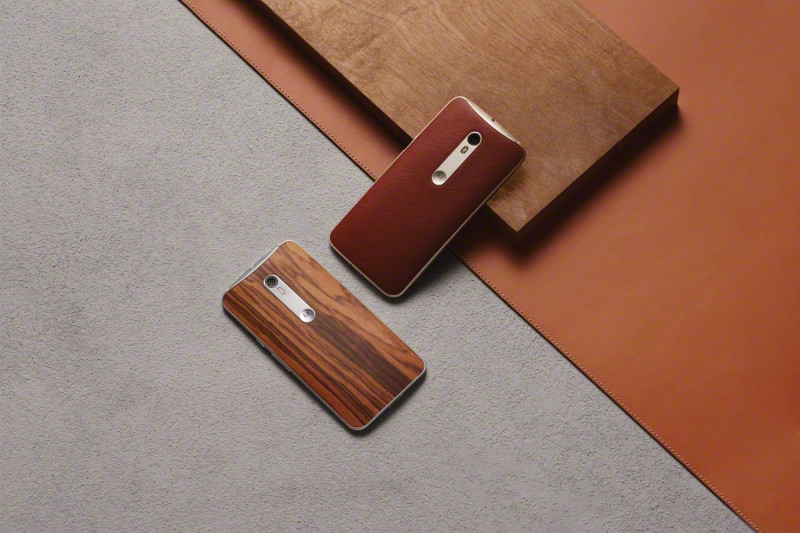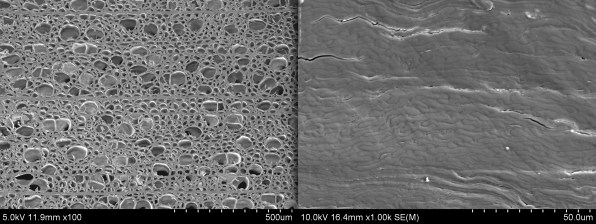Could your future smartphone be made of wood?

Smartphones are dreamily thin, composed mostly of metal and glass materials which aren't always well-suited to the rough and tumble of everyday life.
The industry is always on the lookout for new materials. We've seen a progression from plastic to aluminum and aerospace-aluminum alloys, to stainless steel, ceramics, and even titanium reinforcements.
While metal designs tend to be highly durable and enhance heat dissipation from warm processors and batteries, they struggle with shielding. The metallic backs on phones — such as the classic HTC M8 and M9 phones — prevent wireless charging from working and reduce the sensitivity of antennas.
Ceramics are another good material option with helpful advantages like superior hardness to resist scratching. They also tend to be more brittle, which can be a problem on a device dropped as frequently as a smartphone.
We have seen companies dabble with wood on smartphones in the past. Motorola's 2014 Moto X offered a wood backing as an alternative to plastic or leather. This was just a superficial exterior case, rather than being a key structural component.

If you were a fan of Motorola's Moto Maker wood panels, but wished they were stronger and more durable then you're in luck — enter Superwood.
Superwood: what's it good for?
Superwood is not wood with underpants on the outside. It is an advanced material of densified wood, constructed via a relatively simple and inexpensive new process born out of research from the University of Maryland. The process can turn just about any type of wood into a material scientists claim is stronger than steel and even titanium alloys.
The treatment process first removes lignin from the natural wood. This is the substance that makes wood rigid and brown. The wood is then compressed and squeezed at 65.5 degrees Celsius, which condenses the cellulose structure. The process packs the wood to one-fifth of its size, and it doesn't have the normal tendency of compressed wood to return to its original shape.
Below, we see untreated wood on the left, and the same wood after treatment to compress the structures within it on the right:

(Image courtesy of the University of Maryland)
The outcome is wood that's up to 12 times stronger than natural wood and 10 times tougher, which has materials scientists looking at use cases in buildings and vehicles. There's even a claim the new type of strengthened wood could be used to make bullet-resistant armor.
Superwood is not wood with underpants on the outside — this is densified wood
Scientists from the University of Maryland first reported their findings in Nature, noting their compressed wood is three times as dense as the untreated substance, as well as harder, more scratch-resistant, and more impact-resistant.
Super potential for smartphones
For smartphone designers, that's intriguing. For manufacturers, it could be a new and dramatically cheaper material for the smartphones of the future. Superwood could become the primary rigid substance in a smartphone, replacing metals and ceramics. Protective glass would then only be needed on the front.

Wood on smartphones has a nice hand feel. It's less slippery than glass, and would do away with the need for a case for many consumers.
In addition, part of the process that's been refined by researchers also allows some woods to become transparent. Removing the lignin even further offers a new transparent material, which could be used to protect OLED displays and improve overall lighting efficiency.
Peter Fratzl, a materials scientist at the Max Planck Institute of Colloids and Interfaces in Germany, commented on the study to Scientific American, noting "Instead of creating a design for the material at hand, researchers can create a material to suit the design they want."
'Superwood will be definitely attractive for smartphones'
"Superwood can for certain be used in smartphones given its properties…. Due to its lightweight nature and high strength/toughness, superwood will be definitely attractive for smartphones," Dr Liangbing Hu, one of the researchers involved in the project, told Android Authority in an email.
"It will be lighter with similar mechanical strength to metals currently used."
Dr Hu also said a company has been set up to commercialize the technologies behind superwood, mentioning discussions with companies like Corning, who created the ubiquitous Gorilla Glass. Dr Hu told us superwood could be on the market "very soon," as early as 2019 or 2020.
The prospect of reducing environmental harm along with a strong, lighter material without the trade-offs of metal and glass makes for good reading.
Will we see superwood in a smartphone — perhaps as early as next year? It will be fascinating to find out.
#Google #Android #Smartphones #OS #News @ndrdnws #ndrdnws #AndroidNews
